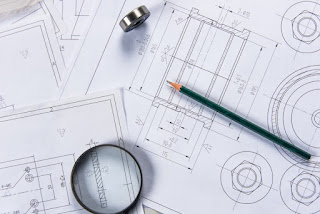Reduce Costs & Improve Accuracy with AutoCAD Civil 3D Projects
In the fast-paced world of civil engineering, staying ahead of the curve requires both efficiency and precision. AutoCAD Civil 3-D stands out as a powerful tool that enables civil engineers to achieve this very goal. By leveraging its complete feature set, Civil 3-D supports a streamlined workflow, minimizes errors, and ultimately lowers business costs while simultaneously increasing accuracy. This blog dives deep into the key features of Civil 3D, the significance of AutoCAD Civil 3D projects in New York, and explores how they contribute to reduced fees and progressive project shipping.
Streamlining workflows for greater efficiency
Civil 3-D boasts a set of features designed to automate repetitive tasks and optimize the design system for AutoCAD Civil 3D projects. Here is a better look at the way it achieves this:
Total object-based approach: Instead of counting lines and arcs, Civil 3-D uses smart gadgets along with pipes, corridors, and surfaces. These smart gadgets store embedded records and replace them dynamically, minimizing the need for manual editing and greatly reducing the threat of hacking errors.
Automated Calculations: Civil 3-D automates calculations for critical sections along with earthwork volumes, pipe lengths, and grading requirements. This eliminates the need for lead calculations, saving huge amounts of time and resources while reducing the likelihood of costly calculation errors later on.
Seamless data integration: Civil 3-D integrates seamlessly with other software packages such as AutoCAD and GIS frameworks. This allows easy import and export of survey information, existing drawings, and topographical statistics for the engineer who has completed AutoCAD Civil 3D course training online New York. This eliminates the need for repeated entry of records and ensures consistency at different levels of the business, further simplifying the workflow.
Dynamic updates: Changes made to at least one thing in the design are automatically propagated throughout the model. For example, editing a pipe's centerline will automatically replace profiles, sections, and connected components, reducing the need for tedious, error-prone manual edits.
Increased accuracy for confidence-inspiring designs
Civil 3-D offers a plethora of features to the engineers who have completed AutoCAD Civil 3D online training as it helps minimize errors and ensures layout fidelity:
Visualization and simulation: 3D modeling skills in Civil 3-D enable hands-on visualization of assignments. This allows engineers to detect conflicts between different ingredients early in the design phase, address problems before construction begins, and require costly retrofits later. In addition, Civil three-D enables simulation of water flow, visitor styles, and structural masses, leading to better and more reliable designs.
Automated Code Review: Civil 3-D can be configured to carefully test designs against corporate standards and local building codes. This capability greatly reduces the risk of non-conformance issues arising during the build, saving the time and cost of rebuilding due to code violations.
Collaboration Tools: Civil 3-D integrates collaboration features that facilitate real-time conversation between group participants of the AutoCAD Civil 3D online training course in the USA. This allows for early identification and resolution of layout discrepancies, minimizing errors that could otherwise affect the entire building and lead to delays and budget overruns.
Cost savings through improved productivity and accuracy
Operationally, Civil 3D improves accuracy, streamlines operations, and significantly reduces costs for engineers who have finished AutoCAD Civil 3D Training. The results are summarized below.
Reduced Rework: Reduced rework features such as automated code testing and 3D visualization help identify and fix bugs faster, reducing the need for expensive rework during construction.
Storage efficiency: Accurate recording of quantities such as pipes, soil, etc. leads to more efficient purchasing and reduces waste. This helps in maintaining the project budget to ensure product efficiency and supply cost of goods decreases.
Fast job delivery: Civil 3D’s optimized workflow reduces planning and documentation time. As a result, projects are completed faster, allowing you to claim a competitive advantage and initial revenue.
Reduced labor costs: When processing and collecting data using conventional methods, less manual work is required, reducing labor hours and associated costs. This provides technical resources to people who have accomplished Civil 3D courses online that provide value strategic infrastructure to ensure the success of the project.
Beyond the bank: Other benefits of civil 3D While saving money is a huge benefit, Civil 3D also has other benefits that help businesses succeed.
Good Communication: Clear communication between engineers who have finished Civil 3D projects, customers, and stakeholders is enabled by the ability to visualize the design in three dimensions by fostering a collaborative environment through viewing unanimous approval and reducing the chances of miscommunication and project delays.
Improving Decision Making: Civil 3D’s data-driven analytics features enable you to make better-informed decisions at every stage of the design process. Engineers can analyze multiple systems and choose the most cost-effective and effective, resulting in the best project results Compatibility: Civil 3D can be used for earthworks and optimization. This minimizes environmental impact and helps promote sustainable building practices.
Final Thoughts
AutoCAD Civil 3D proves its worth as an indispensable tool for civil engineers navigating today’s complex business environment. Ultimately, paving the way for better service delivery by enabling users who have completed AUTOCAD 2D & 3D online course in the USA to work more efficiently, reduce errors, and encourage improved teamwork Civil engineering professionals can have a more productive future significantly improve, gain competitive advantage and support sustainable building practices for a greener future.


.jpg)
Comments
Post a Comment